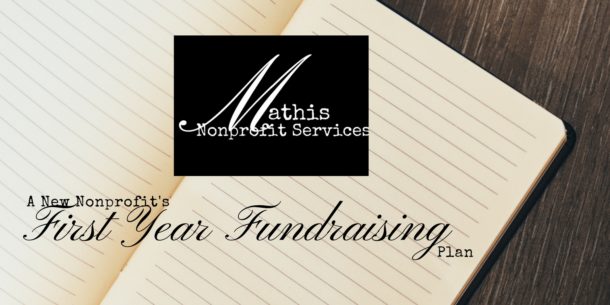Goal setting is a key to planning the Fiscal year. How do you set goals that are realistic? I use the acronym SMARTE when figuring out my goals in grant writing, personal planning, and in my business. Nonprofit organizations can benefit when applying them too.
I was working in a nonprofit and working towards my Bachelor’s degree when I was introduced to SMART goals in a Project Management class. The goals made sense and were ones I could see progress toward my overall goals when I applied them. When grant writing, I came across taking the SMART goals to a deeper level. I started applying the added E letter to all my goal setting and it really added a level of focus I hadn’t known before. So what is the SMARTE method?
S – Specific
Specific means the goal is focused. If you are setting a fundraising or income goal, how will you focus your efforts on raising the money? What income streams will you use? What specifically do you want to accomplish?
A specific goal becomes:
“XYZ organization will raise funds through fee bases services, events, and donors.”
M-Measurable
Measurable means the goal has a way to know when it is achieved. In the example above, the dollar amount needs to be added to make the goal measurable. Let’s say we want to raise $20,000. You know once you reach $20,000, you can check that goal off.
Our new goal reads:
“XYZ organization will raise $20,000 through fee bases services, events, and donors.”
A- Attainable
Attainable is your reality check. Ask yourself is this goal really achievable given our circumstances. It should be a stretch so you can grow. However, if you don’t have any donors, a program, or fundraising plan, then you probably won’t be able to reach $20,000 the first year. Keep working the goal until you can say with confidence that yes, you can reach it. Once you can say yes, it is attainable, then you can move on. Use the SMARTE worksheet to go through the checklist.
R- Relative ( in order to)
Relative is so important to your organization. How does this goal relate to (or align with) your organization’s mission? Does it keep with your values and vision? Does it move your mission, vision, and values forward? If you answer no, do you really need this goal? Does it need to be refocused on some aspect of your organization?
Our goal now evolves to read:
XYZ organization will raise $20,000 through fee-based services, events, and donors in order to fulfill our mission of providing meals to homebound seniors.
T- Time-bound
Time-bound criteria help you focus your efforts even more. Without a time-frame, this goal will never be completed.
Our new goal now looks like this.
XYZ organization will raise $20,000 through fee-based services, events, and donors during the fiscal year 2019-2020 in order to fulfill our mission of providing meals to homebound seniors.
E- Evidence (as evidenced by…)
The added E takes the goal one step further. How will you measure or show you’ve achieved your goal? What output will be created as a result of measuring this goal? Will it be a line item on a profit/loss statement? Receipts? Input on a spreadsheet? A report?
This added step to the SMART goal helps you create the procedures necessary to record and prove your results. When you are at the point of writing grants, the added E will make your grant stand out and you will have the track record needed.
Our finished goal now looks like this:
XYZ organization will raise $20,000 through fee-based services, events, and donors during the fiscal year 2019-2020 in order to fulfill our mission of providing meals to homebound seniors as measured by monthly profit/loss statements provided to the Board.
Or
…as evidenced by income tracked through an income spreadsheet and receipts.
Use these SMARTE goals to create your new annual goals and see how much progress your organization can make. Make sure you get your free SMARTE worksheet by clicking here.
Other Resources:
Lead to Win Podcast by Michael Hyatt and Megan Hyatt Miller Episode The Four Horsemen of Goal Failure


 Most nonprofit leaders lay awake at night trying to figure out how to fund their mission.
Hi! I'm Alesha.
I teach sustainable fundraising in a way that they can take action today so they can serve their clients.
I can help you move from just getting started funding your new nonprofit to gaining confidence in your fundraising and building relationships to knowing what works for your organization and looking at the infinite game when it comes to funding. I’ve worked with nonprofit Founders and written the book I HAVE MY 501(C)3! NOW WHAT?!? Your Blueprint to Starting Your Nonprofit Without Being the Sole Funder that lays the foundations for funding in a new nonprofit.
I’ve worked in Development (Fundraising) Departments in large organizations and I know the no cost, low-cost methods they use to bring in funding. I bring those sound strategies to the nonprofits I serve.
Most nonprofit leaders lay awake at night trying to figure out how to fund their mission.
Hi! I'm Alesha.
I teach sustainable fundraising in a way that they can take action today so they can serve their clients.
I can help you move from just getting started funding your new nonprofit to gaining confidence in your fundraising and building relationships to knowing what works for your organization and looking at the infinite game when it comes to funding. I’ve worked with nonprofit Founders and written the book I HAVE MY 501(C)3! NOW WHAT?!? Your Blueprint to Starting Your Nonprofit Without Being the Sole Funder that lays the foundations for funding in a new nonprofit.
I’ve worked in Development (Fundraising) Departments in large organizations and I know the no cost, low-cost methods they use to bring in funding. I bring those sound strategies to the nonprofits I serve.